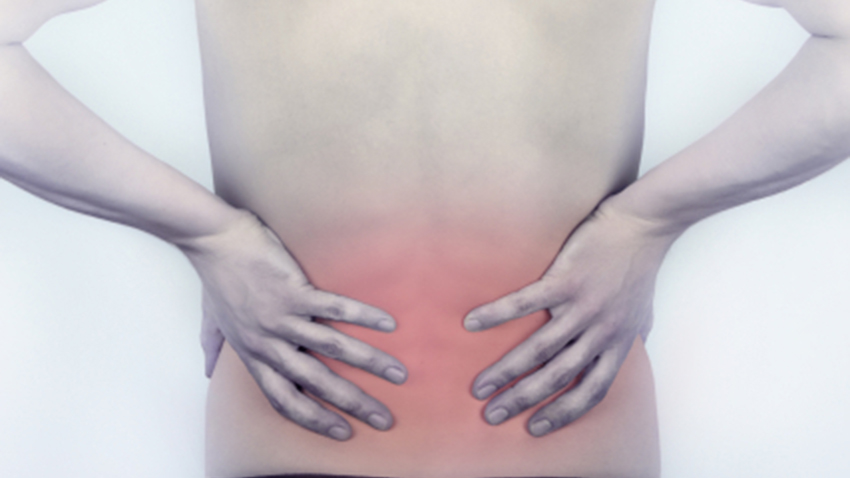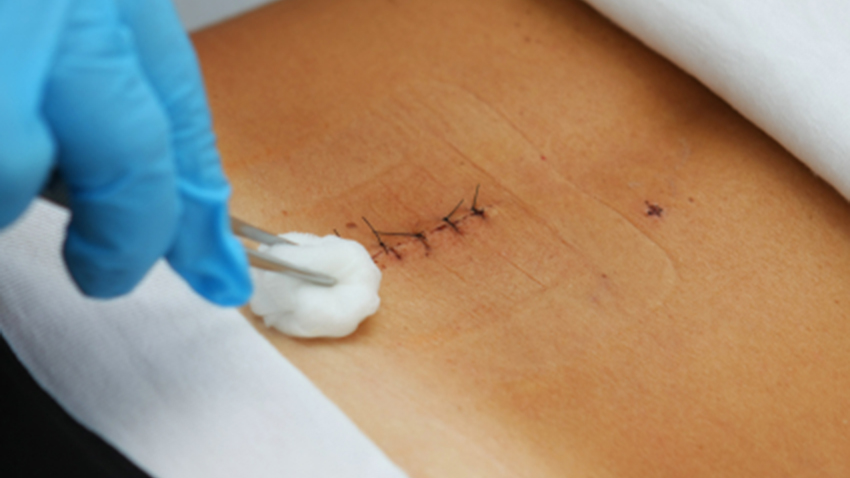Chronic Disease Education
Acute Condition Education
Working with your Family Physician
Working with Allied Care Providers
Lumbar Spine Surgery

Knowledge is Power.
True/False - Quiz: Do You Understand Lumbar Spine Surgery?
Information - Lumbar Spine Surgery
 Back pain is a common complaint among people of all ages. Back pain can be cervical (neck pain), thoracic (middle back pain), lumbar (lower back pain) or tailbone or sacral (coccydynia). Lumbar back pain is the most common type.
Back pain is a common complaint among people of all ages. Back pain can be cervical (neck pain), thoracic (middle back pain), lumbar (lower back pain) or tailbone or sacral (coccydynia). Lumbar back pain is the most common type.
Symptoms of Lumbar Back Pain
If you experience lumbar back pain, your symptoms might include:
• Shooting or stabbing pain
• Pain that radiates down the leg
• Muscle aches
• Pain that worsens when you walk, lift something, bend or stand and/or improves when you recline
In most cases, back pain will resolve on its own with treatment at home and over-the-counter medications. However, lumbar decompression surgery might be necessary if non-surgical treatments don’t help.
Lumbar back surgery may be used to treat:
• A slipped disc and sciatica, which occurs when a spinal disc presses down on a nerve
• Spinal stenosis, a narrowing of a section of the spinal column that puts pressure on nerves
• Spinal injuries including a fracture
What to Expect from Lumbar Spine Surgery
If you and your orthopedic surgeon decide that lumbar decompression surgery is right for you, he or she will perform one or more of these procedures:
• Discectomy to remove part of a damaged disc to relieve pressure on a nerve
• Laminectomy to remove bone from one of your vertebrae to relieve pressure on a nerve
• Spinal fusion to join together two or more vertebrae with a section of bone to strengthen the spine
 Following your lumbar spine surgery, you’ll leave the hospital within one to four days. You’ll start walking in the hospital, and will be able to return to work after four to six weeks with some restrictions. While the success rate of lumbar decompression surgery is high, there are risks, including infection, a blood clot in a leg vein and damage to the spinal nerves or cord.
Following your lumbar spine surgery, you’ll leave the hospital within one to four days. You’ll start walking in the hospital, and will be able to return to work after four to six weeks with some restrictions. While the success rate of lumbar decompression surgery is high, there are risks, including infection, a blood clot in a leg vein and damage to the spinal nerves or cord.
Main operating room procedures
If you have been scheduled for a procedure in the main operating room, then likely you will have been asked to be fasting from the night before, and to have someone drive you home and be with you for the first 24 hours after surgery. Many procedures are performed after just freezing your arm. If requested, intravenous sedation will be administered so that you may even fall asleep during the procedure. A variety of narcotics are usually prescribed after surgery. Pain management usually starts with maximizing on non narcotics options. This usually starts with 1000mg of Tylenol along with 400mg of Ibuprofen (Advil) every 6 hours. If you are taking another anti-inflammatory (Aspirin, Naprosyn, Voltaren etc), then do not take Ibuprofen. A narcotic analgesic will likely have been prescribed. The most common is Tylenol #3. This medication contains a narcotic (codeine) along with Tylenol. If taking Tylenol #3, then do not take additional Tylenol, but please continue with the Advil. If only taking one tablet of Tylenol #3, then supplement with additional Tylenol up to a maximum of 1000mg every 6 hours. Other narcotics may not contain Tylenol (like oxycodone and hydromorphone), and you should be taking a full dose of Tylenol (1000mg) every 6 hours along with the Advil. Discontinue the narcotics as soon as you can.
Some procedures require immobilization after completion. If you do not have a splint or cast after your surgery, you will be asked to keep your dressing on for 48 hours, followed by light bathing and washing of the wound. Do not soak your wound until after your suture have been removed. If your hand has not been immobilized, it is very important to move your fingers from fully straight to fully bent as frequently as possible.
Talk to your healthcare provider if you'd like more information on lumbar spine surgery.
Visit HealthChoicesFirst.com for more videos and resources on orthopedics.
Print this Action Plan and check off items that you want to discuss with your healthcare provider
-
Back pain can be cervical (neck pain), thoracic (middle back pain), lumbar (lower back pain) or tailbone or sacral (coccydynia). Lumbar back pain is the most common type.
-
Lumbar back pain symptoms include shooting or stabbing pain, pain that radiates down the leg, muscle aches, pain that worsens when you walk, lift something, bend or stand and/or improves when you recline.
-
Lumbar back surgery may be used to treat a slipped disc and sciatica, which occurs when a spinal disc presses down on a nerve; spinal stenosis, a narrowing of a section of the spinal column that puts pressure on nerves and spinal injuries including a fracture.
-
If you and your orthopedic surgeon decide that lumbar decompression surgery is right for you, he or she will perform one or more of these procedures: discectomy to remove part of a damaged disc to relieve pressure on a nerve; laminectomy to remove bone from one of your vertebrae to relieve pressure on a nerve and/or spinal fusion to join together two or more vertebrae with a section of bone to strengthen the spine.
-
Following your lumbar spine surgery, you’ll leave the hospital within one to four days. You’ll start walking in the hospital, and will be able to return to work after four to six weeks with some restrictions.
